an update from Jessica
AJ- 24 months:
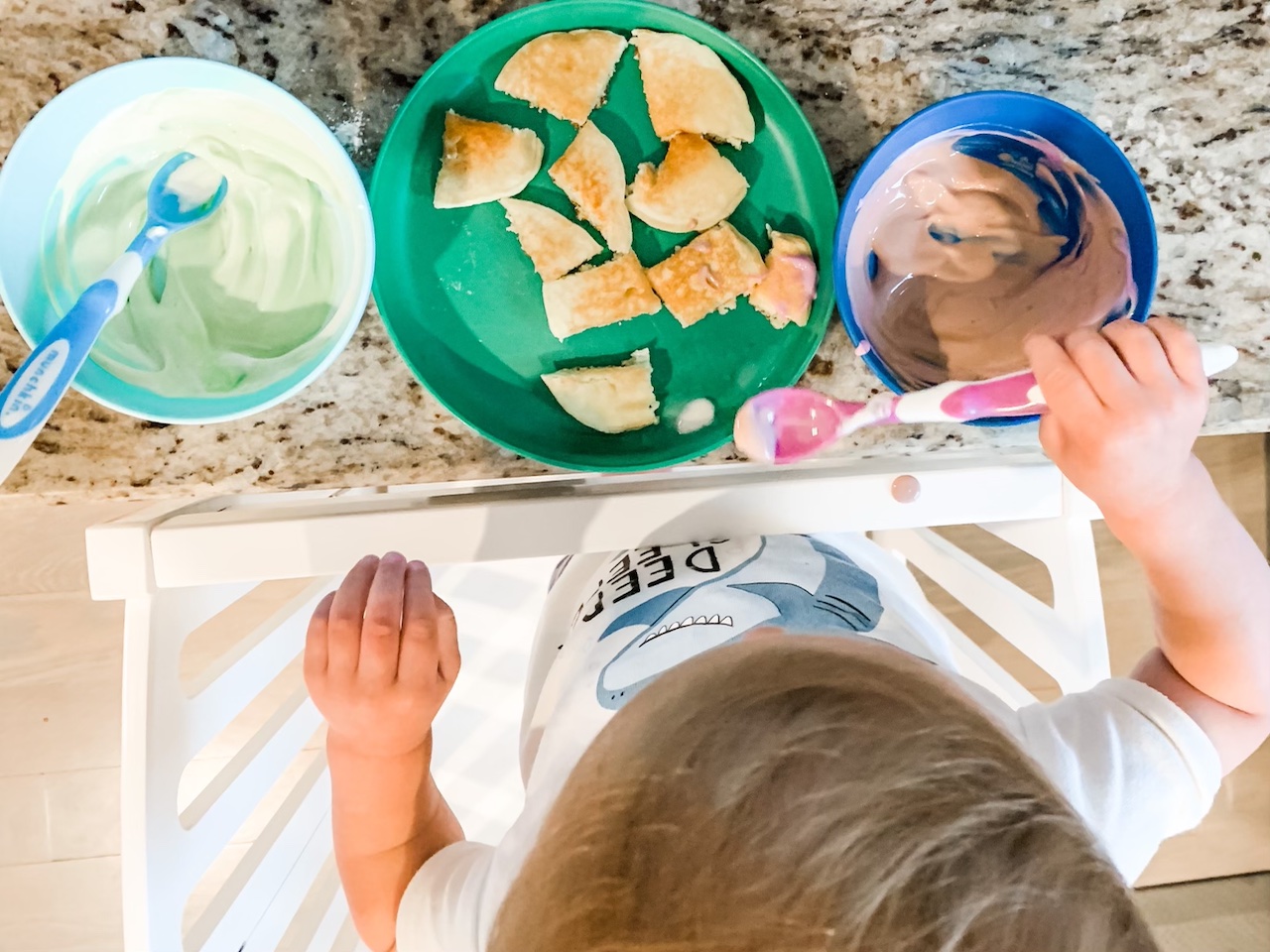
If you have been following my account for awhile, you know that AJ is not the best eater. We recently talked with our pediatrician and decided it was time for AJ to receive more support. We began occupational therapy about a month ago and it has already made such a difference in his relationship with mealtime in general. If your child struggles with mealtime, I highly recommend talking to your pediatrician and deciding if this type of intervention would be helpful for your child. Like any type of intervention, early is KEY to success!
Where your child eats is important. I was on bedrest the last trimester of my second pregnancy and this led to me allowing AJ to “graze” often throughout the day. I also let him eat at a child-sized table throughout the day because I was unable to lift him into his highchair. This created some bad habits over time that we are now breaking (like getting up from his chair throughout a meal, which the small table allowed him to do!). We have found success with our highchair without the tray pushed up to the table. This way he is still getting the support of a highchair balanced with the independence of eating at the table with our family (recommendation from his therapist!).
So much of what we have learned over time and in his therapy sessions has been about exposure to food and positive mealtime experiences. I have learned not to stress over the amount he eats, but rather how he interacted with the foods he was served. For example, before I was pushing him to “please try your potatoes!”, he would decline, get frustrated or angry with me and end up making a mess. Now we have fun with our food and if he tries it, great! If he doesn’t, oh well, we keep exposing him to the foods and move on! It is all we can do!
Some things that have been helpful with AJ’s picky eating/mealtime struggles have been:
- Allowing him to bring a small toy to the table with him.
- Pretend to “feed’ the toy during the meal.
- Model eating the foods/sitting with him whenever possible!
- Lengthening time between meals while minimizing snacks in between.
- Offering a favored food at ALL meals, along with a “sometimes” food and a food that is new or that he has not been willing to try in the past.
- Serving his meals on a character plate or letting him choose what color plate/bowl/etc.
- Using fun utensils and cookie cutters to make the foods new and exciting (even if it is the same old PB & J he eats often!).
- Allowing him to “play” with his food…this was a hard one for me. I have learned from his OT though, that even interacting with a “never” food is progress!
- Encouraging him to help clean up–including taking pieces of uneaten foods off his plate and “kissing” them goodbye to put them in the trash. That way he is still touching foods he otherwise would not even touch, which is a baby step in the right direction!
His favorite snacks/meals right now:
- Clif Kid Zbars- AJ loves the iced oatmeal cookie
- Any type of dip! Sour cream/cream cheese based, ranch, marinara, etc. Our OT also recommended chocolate hummus for a sweet dip that is still nutritious!
- Dried fruit- AJ loves mangoes, strawberries and bananas best
- Yogurt pouches
- Mini pizzas on bagels or English muffins
- Mini pancakes
Remember, even small changes to a favorite food can help encourage your child to expand their taste buds! If you have a picky eater like AJ, I hope these tips help a bit and please reach out if you need to–I would love to chat more on this!
an update from janelle
emmy- 29 months
It’s true that with toddlerhood, often comes picky eating…and that seems to be the case in our house right now. As a baby, we introduced foods using a Baby Led Weaning approach, and Emmy seemed to at least try everything we presented. She would frequently eat things like salmon, peppers, peas, chicken, zucchini and, of course, any and all fruits. (Side note: If you have a baby, want to try baby led weaning, and are wondering, “what the heck do I feed them?” Go check out Feeding Littles on Instagram. I highly recommend their online baby course to learn how to introduce foods safely and effectively!). Now that we’ve reached those toddler years, we’re lucky if she will try a vegetable at dinner time.
Emmy is enrolled in daycare 5-days per week, as my husband and I both work full-time outside of the home. While at daycare, she receives breakfast, a morning snack, lunch and an afternoon snack. Each day we receive a report of what percentage of food she consumes for each food she was presented with that day, and guess what?! She typically eats 50-100% of EVERYTHING. Sometimes we still get a 0% for green beans, but that is totally ok with us. Since Emmy is a great eater at daycare, but not at home, we know she isn’t a true “picky eater,” meaning her resistance to eating variety isn’t related to more sensory based concerns. We suspect she eats more at daycare because she’s with her friends who are eating the same foods.
While Emmy doesn’t eat great at home, there are a few things that we have noticed help encourage more variety in her diet:
- Less is more! When there is less food on her plate, she is less overwhelmed with what is actually on her plate. Toddlers don’t need big servings of food like us adults, and let’s be honest, if we put a big serving on her plate a lot of food would go to waste anyways!
- Take the pressure off! We notice so much resistance to eating when we “try” to get her to eat new foods. Rather, if she sees us eating and enjoying these foods, but not asking her to try them, she sometimes surprises us and picks up that food we thought she would never even touch.
- Bring her in the kitchen! This is my personal favorite tip. When Emmy is in the kitchen with me helping to prepare meals, she often tries the meals that we make! Our kitchen helper is one of my all time favorite purchases, as it allows her to be at the counter with me safely. Recently, we’ve been trying out some meal delivery services to make life a little easier. We’ve been loving the lightening prep meals from Hello Fresh, as they’re quick and easy to prepare, and often Emmy can help me! (Get $90 off your first order of Hello Fresh with my code HERE!)
- Take on gardening! Gardening has been a fun project of ours this spring and summer. Emmy has been so excited to help plant the seeds and help water them each day. She frequently picks and eats strawberries off of our plants before anyone else can get to them, and she keeps talking about all of the zucchini she is going to eat when they are finally here!
UBAM books that teach
How to Feed Your Cheeky Monkey: The “How to” series of engaging board books is perfect for discovering and sharing the big moments and daily routines of every toddler’s life, from brushing teeth, to taking a bath, to going to sleep, to being a good eater. Filled with lovable animal characters, vibrant illustrations and a playful rhyming text, each story features a child and their very own baby animal.
In How to Feed Your Cheeky Monkey, cheeky little monkey wants something to eat! How will she feed her rumbly tummy?
Lift-the-Flap My Busy Day: With over 75-flaps, this book keeps your child engaged while helping them to learn about daily events like mealtime.
-original post below-
Add Your Heading Text Here
Welcome back! We’re excited to bring you the next post in the series “Developing Daily.” For those of you that are new here, Developing Daily is a series that I’ve worked on in collaboration with Janelle Ritchie of The Play Effect. Our hope is empower you to support your child’s development through everyday tasks.
This week we’re talking all about one of our favorite times of day— mealtime!

Janelle Ritchie is a certified pediatric speech-language pathologist at a private practice in Michigan. She has a sweet daughter named Emmy, who just turned 1. She is passionate about working with toddlers first learning to talk as well as the effect play can have on speech & language development.
You can find Janelle on her blog The Play Effect or on Instagram @the_play_effect.
Did you know that your child is perfecting many important skills while eating? Here are some ideas on how to support your child’s development during mealtime:

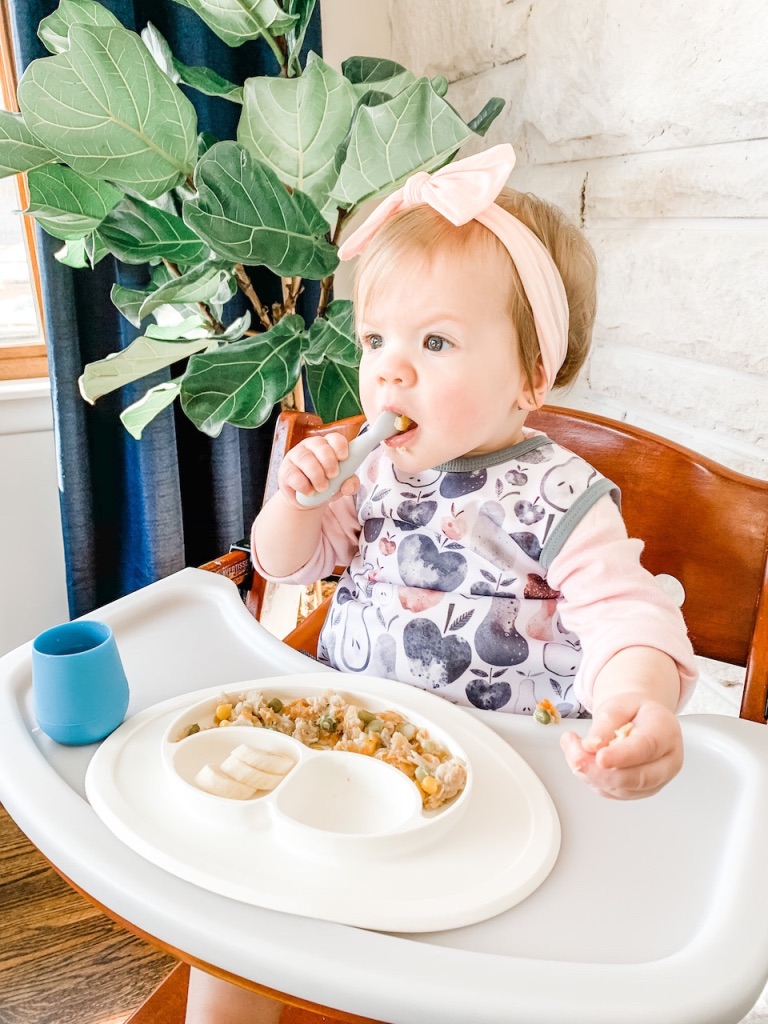
HOW TO SUPPORT social emotional SKILLS DURING MEALTIME:
Eat as a family whenever possible. There are so so many benefits of eating together. It is obviously not always doable, but when it is, it is 100% worth it! Check out my “Food for Family” recipes HERE.
Model manners and healthy eating habits! They learn from watching you. Be sure to eat your chocolate chip cookie in secret (just kidding). However, when you choose nutritious foods to eat in front of your child and model using manners at the family dinner table, you are showing them HOW as well as setting the standard of what you expect from them.
Encourage responsibility with cleaning up starting with toddlers:
- Bring their cup to the sink
- Throw away their napkin
- Help wipe down their tray
Restaurants are a great learning experience! A few tips for taking your little one out to eat:
- Wipe down the table and high chair before setting your child down to eat
- Ensure your child is well-rested (try not take them out during their usual nap time)
- Bring “back up” food items/snacks if they are picky or in case the restaurant is particularly busy
- Bring familiar items (ex. spoon or cup from home)
- Remember: bibs, hand wipes, high chair seat cover, travel spoon
- Bring small toys for baby that aren’t too much of a distraction (not light up/sound toys but a book, stroller toy, teether, etc.)
How to support language skills during mealtime:
Work on your child’s vocabulary. Here are some vocabulary words that are great to work on during mealtime:
- Kitchen/Food-related vocabulary: refrigerator, oven, stove, sink, knife, fork, plate, spoon, cup, bowl, etc.
- verbs such as eat, drink, bite, chew, cut, etc.
- Mealtime is the perfect time to work on requesting! Whether you child is not yet talking or talking in full sentences, mealtime can be used to facilitate their use of language to request. If your child is not yet talking, model Baby Signs to request for “more” or to be “all done” (for more on Baby Signs, check out Janelle’s Baby Signs Series HERE.). If your child is using words or phrases to request, practice “I want + yogurt” or even “Can I have more apples, please?”
- Sing songs! We like to occasionally play “Apples and Bananas” by Super Simple Songs on YouTube or “Peanut Butter and Jelly” by Lisa Loeb while our children are eating.
How to support cognitive skills during mealtime:
Work on concepts of more/less/same
- Use veggie sticks or shape pretzels to create shapes, numbers, letters
- ABC/123 Macaroni & Cheese
- Teach colors using colorful foods (think FRUITS and VEGGIES…lots of them!)
HOW TO SUPPORT oral MOTOR DEVELOPMENT DURING MEALTIME:
How to support fine motor skills during mealtime:
It is helpful to first know how different grasps develop in young children before learning how to support their development:
Palmar Reflex When baby immediately wraps fingers around your finger or an object placed in palm (integrates or goes away around 4 months)
Voluntary Palmar Grasp is developed around 4-6 months when babies voluntarily grab objects
Radial Digital Grasp is developed around 8-9 months and consists of more precise finger movements. Babies using this grasp use fingertips to grab things rather than their entire hand.
Pincer Grasp is typically developed by 12 months. This grasp involves using the tip of the thumb and index finger to pick up food/small objects.
Finger isolation/Pointing developed by 12 months.
How can mealtime help your baby develop a more sophisticated grasp?
-
- Practice pincer grasp by putting small pieces of food (ex. Cheerios) into an ice cube tray for baby to get out using/practice perfecting their pincer grasp
- Encourage spoon use and practice during meal time as well as opportunities to practice picking up small pieces of food on their tray and self-feeding
- Allow children to play with utensils/playdough not at mealtime to practice use and build muscle memory
We can’t say enough great things about Grabease! They are a great starter utensil that promote fine motor development without becoming a choking hazard. You can get them HERE.
HOW TO SUPPORT PLAY SKILLS INVOLVING MEALTIME:
Encourage your child to pretend feed a baby doll or cook using a play kitchen or pots/pans and other kitchen utensils.
Have children use their imagination and play “restaurant” with you, siblings or friends. Taking “orders” and creating a menu (or putting out take-out menus you have in your home) for children to play with are also a great way to incorporate early literacy skills!
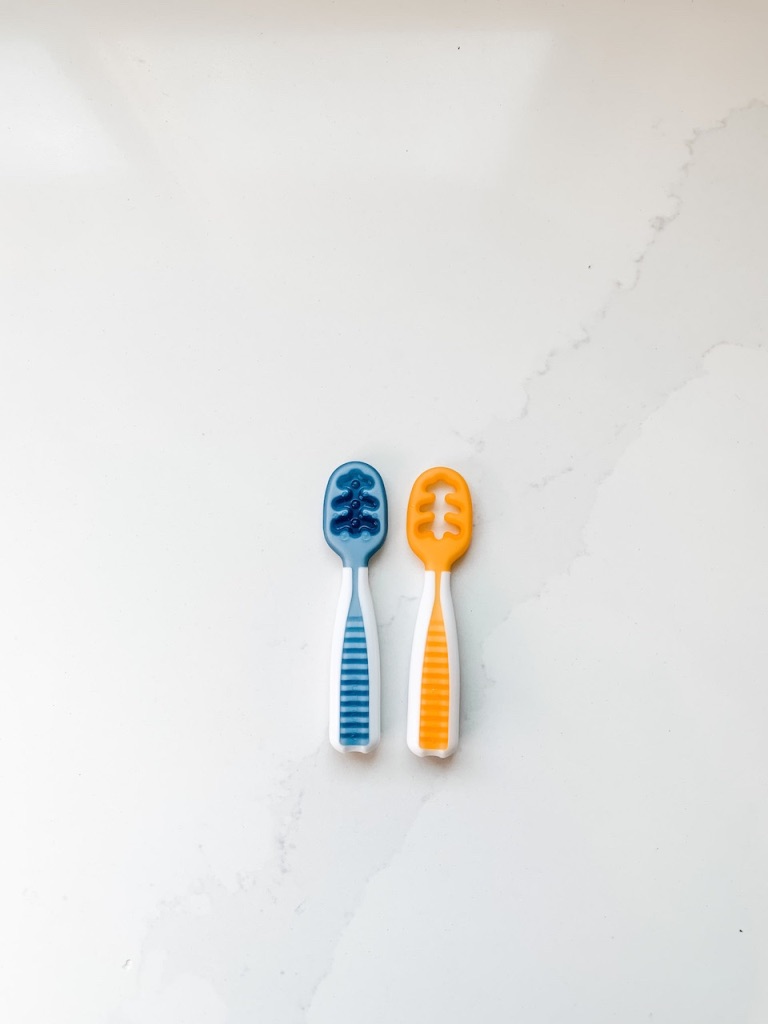

What do I do if my child protests during mealtime? Here are a few troubleshooting tips:
- Provide Choices. Ask your child which color plate they would like for dinner or where they would like to sit.
- Start with small goals. It can be overwhelming if you demand too much of your child, especially if they are picky. Start small by prompting them to take 1-2 bites of a new food to start.
- Always put one thing on their plate that they like. Make sure there is 1 familiar or well liked item on their plate when introducing new foods or re-introducing foods they are unsure of.
- Change things up. If they don’t like steamed broccoli, try roasting it!
- Make it fun! Have a picnic lunch outside, make/buy fun placemats, use a new plate with their favorite character, etc.
- Involve them. Bring your child with you grocery shopping for meal ingredients, allow them to help with the cooking process or even with deciding what to make for dinner.
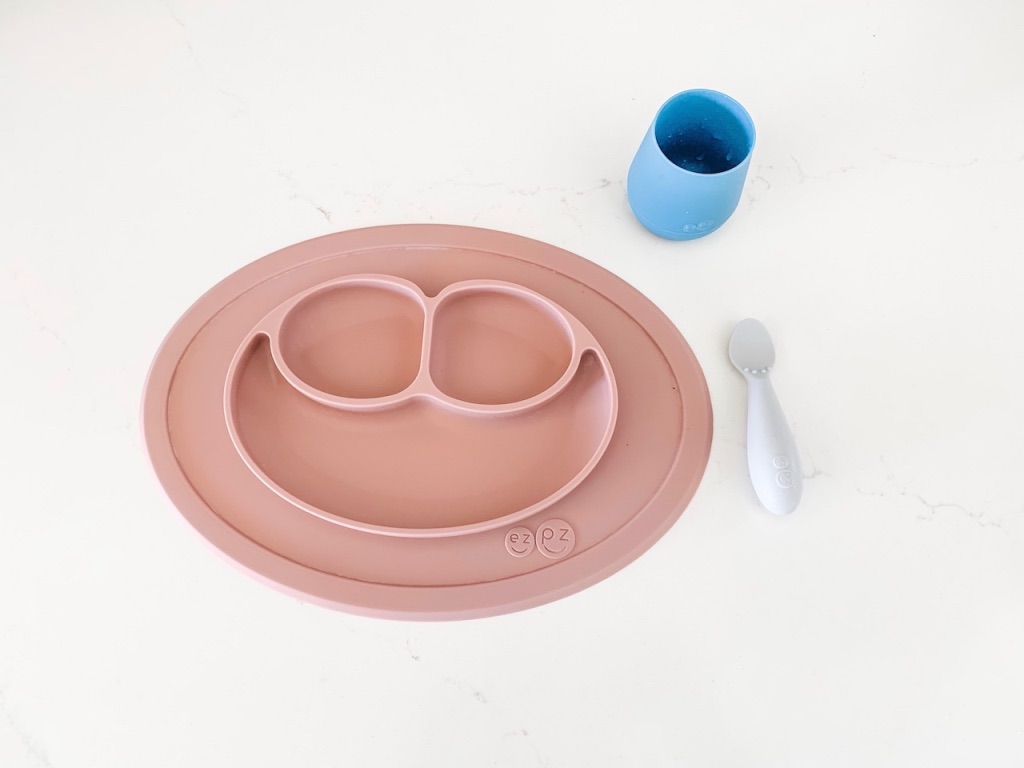
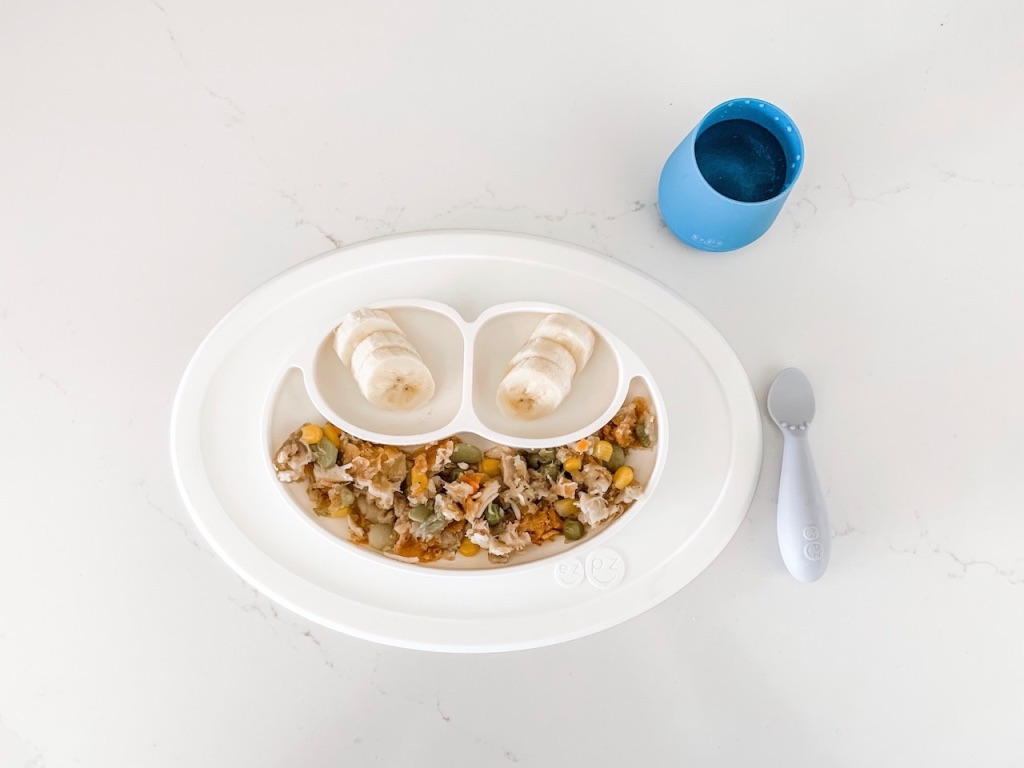
What else can you do to support your child’s development at mealtime?
Read books about mealtime! We love these books for this purpose:
- Excuse Me! By Karen Katz
- Llama Llama Yum Yum Yum! by Anna Dewdney
- Eating the Alphabet by Lois Ehlert
- How Do Dinosaurs Eat Their Food? by Jane Yolen
Janelle’s Favorite Meal Time Products:
Jessica’s Favorite Mealtime Products:
*Disclosure: I may earn a small commission for my endorsement, recommendation and/or any link to products or services from this website. Your purchase helps support my work in bringing you valuable content regarding play and it’s impact on child development.

